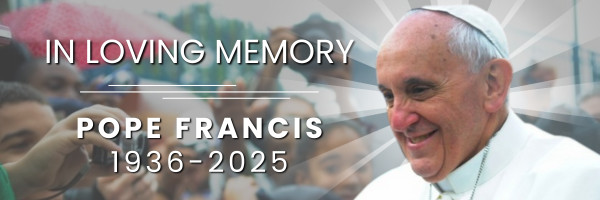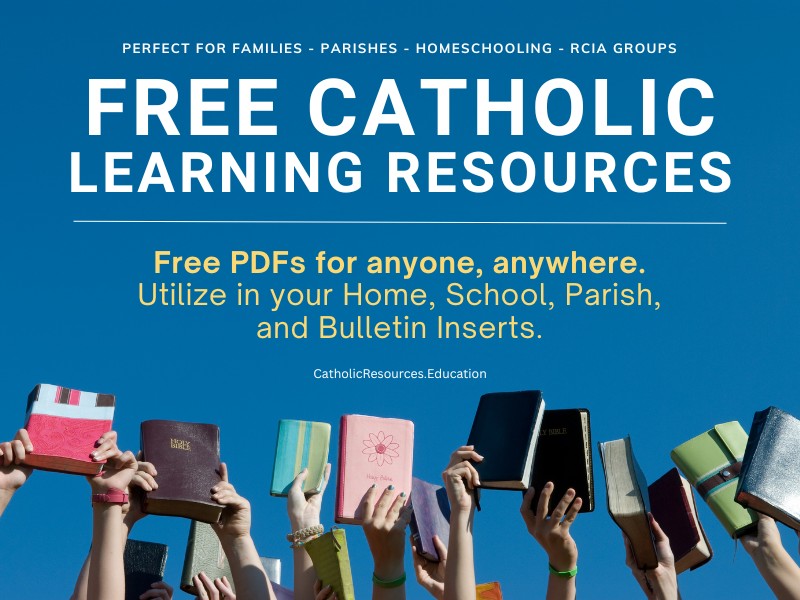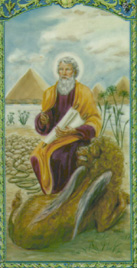We ask you, urgently: don't scroll past this
Dear readers, Catholic Online was de-platformed by Shopify for our pro-life beliefs. They shut down our Catholic Online, Catholic Online School, Prayer Candles, and Catholic Online Learning Resources essential faith tools serving over 1.4 million students and millions of families worldwide. Our founders, now in their 70's, just gave their entire life savings to protect this mission. But fewer than 2% of readers donate. If everyone gave just $5, the cost of a coffee, we could rebuild stronger and keep Catholic education free for all. Stand with us in faith. Thank you.Help Now >
Church History: El Pueblo de Nuestra Señora la Reina de los Angeles de Porciúncula
FREE Catholic Classes
ARCHDIOCESE of LOS ANGELES
The 16th and 17th Centuries
At "34 degrees 10 minutes" reckoning, it all began along the small and "beautiful river from the northwest" (so located and described by Fray Juan Crespi) to which they gave the name Nuestra Señora de los Angeles de la Porciúncula on Wednesday, August 2 in the year 1769. August 2nd was the day in the Franciscan calendar when the feast of the 'Perdono' at the famous tiny church at the foot of Assisi was celebrated. Years later, on 4 September in the year 1781, a new pueblo was established along the banks of this river. That little pueblo, which grew to the gigantic modern metropolis it is now, was given the name of the river. When the pueblo shared its name with the Archdiocese later on, the feast of Our Lady of the Angels was set for celebration on the birthday of the city, 4 September.
But why called 'Porciúncula' and why Our Lady of 'the Angels'? Early in his life about 1212, St. Francis of Assisi was given a small, ruined chapel by the Benedictines for his repair and eventual use near Assisi, where he later died. It was on a very small piece of property, a small portion(a 'porziuncola' in Italian). Later on, this place of worship became a center of pilgrimage, devotion and repentance. A fresco was painted on the wall behind the altar depicting the Blessed Virgin Mary surrounded by angels. Thus the chapel, which is now surrounded and sheltered by a monumental Papal Basilica, took the name: 'Saint Mary of the Angels at the Little Portion'. So Los Angeles received its name based on this ancient site. From a many-worded name in Spanish, through the shortened 'Los Angeles' in English, the name was further limited to just the letters 'LA' in Southern Californian, which is what so many of us know it by now.
The beginning of Catholicism in California dates from the explorations of Juan Rodriguez Cabrillo in 1542 and Sebastian Vizcaino in 1602. These representatives of a Catholic power were accompanied by priests who celebrated Holy Mass on California shores over three centuries ago.
The story of El Pueblo de Nuestra Señora de los Angeles "from Hispanic colonial foundation to international center for learning, art and commerce" is as much a work of imagination as it is of history. It was the "Dreamers of God" who began it.
The "Catholic presence" in the area now comprising the City of Los Angeles actually pre-dates the city by a dozen years. The very name derives from the diary of Fray Juan Crespi, Franciscan, who introduced the feast of the Portiuncula into California's vocabulary. And it was a group of Catholics, most of them predominantly of African American origin, who effected the foundation of El Pueblo de Nuestra Señora de los Angeles, in the fall of 1781, named after the river.
Blessed Fray Junipero Serra
Fray Junipero Serra, Franciscan, the Presidente of the California Missions, first walked the dusty pathways of the pueblo the following year. Los Angeles continued for some years to be a Catholic enclave, with most of its inhabitants worshipping at the Old Plaza Church. Thousands of baptisms in the missions were recorded during the years after Serra, but the mission decline by 1834 resulted in lands and herds being expropriated by private parties and even churches sold or leased. However, on 17 January, 1837, a city resolution declared that "the Roman Catholic apostolic religion shall prevail throughout this jurisdiction."
Acting on a resolution from the Mexican Congress, Pope Gregory XVI established a hierarchy in California on 27 April, 1840, and elevated the Franciscan Friar, Francisco Garcia Diego y Moreno, as the first bishop of the Californias. Boundaries for the gigantic Diocese of both Californias were the Colorado River to the east, Oregon line north, Pacific Ocean in the west and all of Baja California to the south.
The First Diocese of California del Norte
The title was officially changed to Monterey in 1849. By 1853 Bishop Sadoc Alemany, Dominican, the second bishop for California, became the first Archbishop of San Francisco and peninsular California was separated from the Diocese of Monterey. The next title change in 1859 further separated the area; Bishop Thaddeus Amat, Vincentian, moved his episcopal seat to Los Angeles and added the city's name to the diocesan title. He built the present St. Vibiana Cathedral in 1876.
Although his successor, Bishop Francis Mora, petitioned the Holy See for a reduction of his jurisdiction, the division did not occur until many years later. During the tenures of Bishops George Montgomery and Thomas Conaty, the population of Los Angeles doubled and more than 100 churches, schools and hospitals were built.
But it was Bishop John J. Cantwell, who received permission in 1922 to divide the 90,000 square-mile Diocese of Monterey-Los Angeles when Pius XI created the Diocese of Los Angeles-San Diego. This area embraced the remaining southland counties stretching to the Mexican border.
Beginning of the Modern Era
A later major alternation in the southland occurred on 11 July, 1936, with the erection of the second Metropolitan district in California, at Los Angeles. Simultaneously, the four southernmost counties were fashioned into the Diocese of San Diego. Bishop Cantwell became the first Archbishop of Los Angeles and subsequently held the longest term as Ordinary 30 years.
A major accomplishment of his episcopate was his provision for the spiritual and material welfare of the non-English speaking people of the region. Archbishop Cantwell erected more than fifty parishes and missions for the Spanish-speaking populace.
Four months after Archbishop Cantwell's death in 1947, Archbishop J. Francis McIntyre was appointed to head the Los Angeles Archdiocese. Recognition of southern California's increasing ecclesiastical importance came in 1952 when Pope Pius XII raised him to the rank of Cardinal, the first one in the western United States.
Until 1970 Cardinal McIntyre shepherded the archdiocese during a period of incredible growth and expansion. Between 1948 and 1963, eighty-two parishes were added and Catholic schools trebled from 141 to 347, about one a month for fifteen years. And the waves of immigration rolled on with the influx of Chinese, Japanese, Vietnamese, Koreans and dozens of other Asiatic groups. The Hispanic population rose again as did numbers of African Americans.
Cardinals Manning and Mahony
In 1970 Coadjutor Archbishop Timothy Manning acceded to the See as the third Archbishop of Los Angeles and three years later became the second cardinal for the largest city in the world dedicated to Our Lady. For fifteen years the Irish-born prelate worked through enormous changes in the Church aided with four auxiliary bishops for the three country area.
With Cardinal Manning's resignation in 1985, the Archdiocese looked to Rome and Pope John Paul II for a successor. The pope named the first native born Angeleno to shepherd the largest Archdiocese in the country Bishop Roger M. Mahony who headed the Diocese of Stockton and was an alumnus of St. John's Seminary.
In 1991 Archbishop Mahony became the third Cardinal. He presently oversees an archdiocese of almost four million Catholic extending over Santa Barbara County, Ventura County and Los Angeles County. He created the five Pastoral Regions in 1986 (Santa Barbara, San Fernando, San Gabriel, Our Lady of the Angels, and San Pedro) each of which has an episcopal vicar.
Thus the Archdiocese of Los Angeles continues to meet one of the greatest challenges in United States history, with the assistance of Nuestra Señora de los Angeles de la Porciúncula.
Historical Order of Bishops
Bishop Francisco Garcia Diego y Moreno, O.F.M. 1840-46
Bishop Joseph Sadoc Alemany, O.P. 1850-53
Bishop Thaddeus Amat, C.M. 1854-78
Bishop Francis Mora 1878-96
Bishop George Montgomery 1896-1903
Bishop Thomas Conaty 1903-1915
Archbishop John J. Cantwell 1917-47
Cardinal J. Francis McIntyre 1948-70
Cardinal Timothy Manning 1970-85
Cardinal Roger Mahony 1985-Present
Contact
Catholic Online
https://www.catholic.org
CA, US
Catholic Online - Publisher, 661 869-1000
info@yourcatholicvoice.org
Keywords
Los Angeles, Archdiocese, Archbishop, Mahony, Church, History
More Catholic PRWire
Showing 1 - 50 of 4,716
A Recession Antidote
Randy Hain
Monaco & The Vatican: Monaco's Grace Kelly Exhibit to Rome--A Review of Monegasque-Holy See Diplomatic History
Dna. Maria St. Catherine Sharpe, t.o.s.m., T.O.SS.T.
The Why of Jesus' Death: A Pauline Perspective
Jerom Paul
A Royal Betrayal: Catholic Monaco Liberalizes Abortion
Dna. Maria St.Catherine De Grace Sharpe, t.o.s.m., T.O.SS.T.
Embrace every moment as sacred time
Mary Regina Morrell
My Dad
JoMarie Grinkiewicz
Letting go is simple wisdom with divine potential
Mary Regina Morrell
Father Lombardi's Address on Catholic Media
Catholic Online
Pope's Words to Pontifical Latin American College
Catholic Online
Prelate: Genetics Needs a Conscience
Catholic Online
State Aid for Catholic Schools: Help or Hindrance?
Catholic Online
Scorsese Planning Movie on Japanese Martyrs
Catholic Online
2 Nuns Kidnapped in Kenya Set Free
Catholic Online
Holy See-Israel Negotiation Moves Forward
Catholic Online
Franchising to Evangelize
Catholic Online
Catholics Decry Anti-Christianity in Israel
Catholic Online
Pope and Gordon Brown Meet About Development Aid
Catholic Online
Pontiff Backs Latin America's Continental Mission
Catholic Online
Cardinal Warns Against Anti-Catholic Education
Catholic Online
Full Circle
Robert Gieb
Three words to a deeper faith
Paul Sposite
Relections for Lent 2009
chris anthony
Wisdom lies beyond the surface of life
Mary Regina Morrell
World Food Program Director on Lent
Catholic Online
Moral Clarity
DAN SHEA
Pope's Lenten Message for 2009
Catholic Online
A Prayer for Monaco: Remembering the Faith Legacy of Prince Rainier III & Princess Grace and Contemplating the Moral Challenges of Prince Albert II
Dna. Maria St. Catherine Sharpe
Keeping a Lid on Permissiveness
Sally Connolly
Glimpse of Me
Sarah Reinhard
The 3 stages of life
Michele Szekely
Sex and the Married Woman
Cheryl Dickow
A Catholic Woman Returns to the Church
Cheryl Dickow
Modernity & Morality
Dan Shea
Just a Minute
Sarah Reinhard
Catholic identity ... triumphant reemergence!
Hugh McNichol
Edging God Out
Paul Sposite
Burying a St. Joseph Statue
Cheryl Dickow
George Bush Speaks on Papal Visit
Catholic Online
Sometimes moving forward means moving the canoe
Mary Regina Morrell
Action Changes Things: Teaching our Kids about Community Service
Lisa Hendey
Easter... A Way of Life
Paul Spoisite
Papal initiative...peace and harmony!
Hugh McNichol
Proclaim the mysteries of the Resurrection!
Hugh McNichol
Jerusalem Patriarch's Easter Message
Catholic Online
Good Friday Sermon of Father Cantalamessa
Catholic Online
Papal Address at the End of the Way of the Cross
Catholic Online
Cardinal Zen's Meditations for Via Crucis
Catholic Online
Interview With Vatican Aide on Jewish-Catholic Relations
Catholic Online
Pope Benedict XVI On the Easter Triduum
Catholic Online
Holy Saturday...anticipation!
Hugh McNichol
Join the Movement
When you sign up below, you don't just join an email list - you're joining an entire movement for Free world class Catholic education.

Novena for Pope Francis | FREE PDF Download
-

- Stations of the Cross
- Easter / Lent
- 5 Lenten Prayers
- Ash Wednesday
- Living Lent
- 7 Morning Prayers
- Mysteries of the Rosary
- Litany of the Bl. Virgin Mary
- Popular Saints
- Popular Prayers
- Female Saints
- Saint Feast Days by Month
- Pray the Rosary
Even AI Can’t Predict the Next Pope
Introducing “Journey with the Messiah” – A Revolutionary Way to Experience the Bible
“Thank You for Bringing Me Back to the Square” — Pope Francis’ Last Words Capture a Life Lived for the People
Daily Catholic
 Daily Readings for Friday, April 25, 2025
Daily Readings for Friday, April 25, 2025 St. Mark: Saint of the Day for Friday, April 25, 2025
St. Mark: Saint of the Day for Friday, April 25, 2025 Prayer for Policemen: Prayer of the Day for Friday, April 25, 2025
Prayer for Policemen: Prayer of the Day for Friday, April 25, 2025 Daily Readings for Thursday, April 24, 2025
Daily Readings for Thursday, April 24, 2025 St. Fidelis of Sigmaringen: Saint of the Day for Thursday, April 24, 2025
St. Fidelis of Sigmaringen: Saint of the Day for Thursday, April 24, 2025- A Prayer for Special Intentions: Prayer of the Day for Thursday, April 24, 2025
![]()
Copyright 2025 Catholic Online. All materials contained on this site, whether written, audible or visual are the exclusive property of Catholic Online and are protected under U.S. and International copyright laws, © Copyright 2025 Catholic Online. Any unauthorized use, without prior written consent of Catholic Online is strictly forbidden and prohibited.
Catholic Online is a Project of Your Catholic Voice Foundation, a Not-for-Profit Corporation. Your Catholic Voice Foundation has been granted a recognition of tax exemption under Section 501(c)(3) of the Internal Revenue Code. Federal Tax Identification Number: 81-0596847. Your gift is tax-deductible as allowed by law.






 Daily Readings for Friday, April 25, 2025
Daily Readings for Friday, April 25, 2025 St. Mark: Saint of the Day for Friday, April 25, 2025
St. Mark: Saint of the Day for Friday, April 25, 2025 Prayer for Policemen: Prayer of the Day for Friday, April 25, 2025
Prayer for Policemen: Prayer of the Day for Friday, April 25, 2025 St. Fidelis of Sigmaringen: Saint of the Day for Thursday, April 24, 2025
St. Fidelis of Sigmaringen: Saint of the Day for Thursday, April 24, 2025

